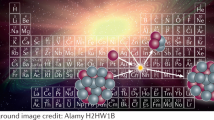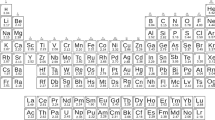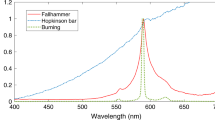Abstract
IT has been long recognised that the lines of the iron spectrum are displaced towards the red when the pressure about their source is increased, the magnitude of the displacement being not the same for all the lines. On account of this fact Gale and Adams (Astrophys. Journ. 35, 1912, p. 10) have classified the lines in four groups, a, b, c, and d. Group a includes all the flame lines, which have small displacements. Group b is a large one and includes all the lines of small shifts which are not included in Group a. Group c consists of lines having much larger displacements than those of Group b. Group d is made up of lines which present very large displacements. An additional Group e, including lines showing displacements to the violet side, was found later by St. John and Ware (Astrophys. Journ. 36, 1912, p. 14).
This is a preview of subscription content, access via your institution
Access options
Subscribe to this journal
Receive 51 print issues and online access
$199.00 per year
only $3.90 per issue
Buy this article
- Purchase on Springer Link
- Instant access to full article PDF
Prices may be subject to local taxes which are calculated during checkout
Similar content being viewed by others
Author information
Authors and Affiliations
Rights and permissions
About this article
Cite this article
CATALÁN, M. Relation between Pressure Shift, Temperature Class, and Spectral Terms of the Iron Lines. Nature 113, 889–891 (1924). https://doi.org/10.1038/113889b0
Issue Date:
DOI: https://doi.org/10.1038/113889b0
Comments
By submitting a comment you agree to abide by our Terms and Community Guidelines. If you find something abusive or that does not comply with our terms or guidelines please flag it as inappropriate.



